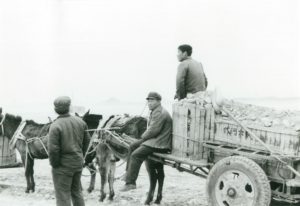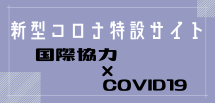Building a “Control Tower” for Economic Cooperation
The Achievements of Former Prime Minister Abe
Top Sales
Shinzo Abe abruptly resigned as Prime Minister on September 6, 2020, over ill health. This time, I will focus on his “diplomatic achievements” and “footprints on foreign economic cooperation.”
First of all, the greatest achievement is “Free and Open Indo-Pacific (FOIP) “. This initiative was proposed at the 6th African Development Conference (held in Nairobi, Kenya) in August, 2016.
Its international strategy goes far beyond China’s “Belt and Road Initiative (BRI)”. Japan says it is responsible for fostering and enriching exchanges between the Pacific and Indian Oceans, Asia and Africa, regardless of national power or military power, as a place that regards “freedom” and “the rule of law” and “market economy.”
In the past, for example, Prime Minister Masayoshi Ohira’s “Trans-Pacific Partnership Agreement” and Prime Minister Kiichi Miyazawa’s “Meeting to Consider Asia and the Pacific and Japan in the 21st Century” were set up *by the government administrations.
But these ideas do not go beyond the areas of Asia and the Pacific. The Abe’s FOIP initiative expects Sub-Saharan Africa to become vast growth center for the future. Therefore, it can be said that this plan has apt historical insight.
India’s role is particularly expected, and Abe’s relations with Indian Prime Minister Narendra Modi deepened rapidly. Under such relations, the Indian high-speed railway (HSR) construction project assisted by the economic cooperation of Japan was agreed upon. Currently, it is under construction at full speed. But the construction cost is expected to be nearly 2 trillion yen. All of these are ODA (yen loan cooperation).
This is “top sales” so to speak. Since the inauguration of the second Abe Cabinet in December 2012, “economic revitalization” has been a top priority. It was highly valued as Abenomics, but it is expected to have had an economic effect of about 9 trillion yen in top sales overseas through its own summit diplomacy. It is said that the scale has three times the economic effect than before (Eiji Oshita, “Secret Records of the Chief Cabinet Secretary”).
Kasumigaseki-led ODA
By the way, looking at the relationship between Prime Minister Abe at that time and Prime Minister Modi of India, it is recollected that he was rooted in a political family. Abe’s grandfather, Nobusuke Kishi, opened up diplomatic relations withIndia during his first postwar trip to Asia during the time as a prime minister. Prime Minister Nehru made his first visit to Japan in October, 1957. He requested Prime Minister Kishi to cooperate with India’s second five-year plan. It was Japan’s first yen loan cooperation. The following year, a first yen loan worth a total of $50 million was decided to build facilities such as electric power generation equipment and ships.
And now, Abe, apparently being guided by his grandfather, tried to contribute to India’s economic development by cooperating with yen loans for the construction of HSR. It can be said that it was truly an “historical encounter”.
In a word, former Prime Minister Abe’s greatest achievement in foreign economic cooperation is that the prime minister’s office held top-level discussions and final decisions on foreign economic cooperation policies. Until then, the Kasumigaseki bureaucratic group considered requests for assistance from developing countries at the bureaucratic level, and finally, made decisions through a formal process of cabinet.
This is one hypothesis. It dates back to the establishment of the Overseas Economic Cooperation Fund (OECF) in 1961. The fund consisted of four ministries at the time: the Ministry of Finance, the Ministry of International Trade and Industry, the Ministry of Foreign Affairs, and the Economic Planning Agency. In one theory, it is said that Kasumigaseki aimed at preventing sideways intervention from politicians by assembling such a co-management system. Perhaps, the experience in the era of war compensation wherein there was intervention by politicians might be reflected in this system.
Therefore, it can be said that the Cabinet decision has long been the only formal process for ODA implementation, and Kasumigaseki bureaucrats have managed the entire process of requests, decisions and the implementation of ODA.
ODA led by the Prime Minister’s Office
However, Abe has considered the importance of economic cooperation since he was Chief Cabinet Secretary in the Koizumi Administration in 2005, hosting the Foreign Economic Cooperation Council and hearing opinions from the business community and officers in charge of aid agencies. Since the establishment of the first Abe Administration in September, 2006, the “Overseas Economic Cooperation Council” was established on April 28, 2006, by the Prime Minister’s Office. It was established in the form of abolishing the former “Ministerial Conference on Foreign Economic Cooperation”. Such economic cooperation was inherited and taken over to the second Abe Cabinet in 2012.
The main roles are as follows:
(1) The Cabinet shall establish the Overseas Economic Cooperation Council in order to flexibly and substantively deliberate important matters concerning Japan’s overseas economic cooperation (including ODA and other government funds, and related private funds), and to ensure the efficient implementation of strategic overseas economic cooperation.
(2) The composition of the meeting consists of the Prime Minister as the Chairman, the Chief Cabinet Secretary by the Member of the Cabinet Secretariat, and the Minister of Finance, Foreign Affairs, and Economy Trade and Industry.
(3) The meeting will be hosted by the Chairperson and, if necessary, by the Chief Cabinet Secretary.
(4) The Secretariat is the Cabinet Secretariat.
The overseas economic cooperation conference is exactly the “Control Tower” that the author has insisted on for many years for ODA. The range is wide including cooperation with the private sector, and it is not at a level of a past Kasumigaseki government office. It focuses on the ideal way of overseas economic cooperation of Japan comprehensively and strategically according to the national interests of Japan.
It can be said that it is an aid decision mechanism beyond the United States Agency for International Development (USAID), former Department Foreign Development (DFID) of UK, and the German Ministry of Economic Cooperation. Japan’s Overseas Economic Cooperation Council aims to place importance on ODA in the national interest, as well as European countries and the US.
Abe has maintained a policy of first utilizing ODA for Japan’s development and contributing to the development of developing countries by obtaining a domestic consensus for foreign assistance. More importantly, as part of the FOIP described earlier, Japan is moving high-speed railways to India’s development in order to deepen cooperation with India, which is the key to the FOIP.
This is an international cooperation project that is not easy to implement at the frontline level. But I would like Japan, a higher technology-based country, to be consolidated with aid agencies and companies and do its best. It should also be a “show-window” for Japan that will increase its trust in the world.
By Mitsuya Araki, Editor-in-chief of IDJ
“International Development Journal”, 2020 December edition
*****以下、日本語原文*****
羅針盤
経済協力の“司令塔”を構築 安倍前総理大臣の功績
トップ・セールス
安倍晋三氏は2020年9月6日、体調不良を理由に内閣総理大臣を突然辞任した。そこで、今回は安倍氏の“外交功績”と“対外経済協力に関する足跡”にスポットを当てることにした。
まず最大の功績は「自由で開かれたインド太平洋戦略構想」である。これは2016年8月の第6回アフリカ開発会議(ケニアのナイロビで開催)で提唱された。その国際戦略性は、中国の自国中心的な「一帯一路」をはるかに超える構想だと言える。日本は太平洋とインド洋、アジアとアフリカとの交流を国力や軍事的威力と関係なく、「自由」と「法の支配」、そして「市場経済」を重んじる場として育て、豊かにする責任を担っていると述べている。
これまでは、たとえば大平正芳首相の「環太平洋連携協定」、宮澤喜一首相の「21世紀のアジア・太平洋と日本を考える懇談会」などが歴代の政権にあったが、これらの考え方はアジア・太平洋という領域を超えていない。安倍構想はサブサハラ・アフリカを将来への広大な成長センターと見込んでいる。だから、この構想は、まさに歴史的な洞察力を秘めていると言える。
なかでもインドの役割が大きく期待され、インドのモディ首相と安倍首相(当時)との関係が急速に深まっていった。そうした中で生まれたのが、日本の経済協力によるインド高速鉄道建設事業である。現在、総力をあげて建設中であるが、その施工費は巨額で1兆円とも2兆円とも見込まれる。これらはすべてODA(円借款協力)である。
これは、まさに “トップ・セールス”である。第2次安倍内閣は2012年12月の政権発足以来、“経済再生”を最優先課題にしてきた。それはアベノミクスと言われ高く評価されたが、自らの首脳外交による海外でのトップ・セールスでは約9兆円という経済的効果をもたらしたと見られている。その規模はこれまでと比べて3倍の経済的効果をもたらすものだと言う(大下英治著『内閣官房長官秘録』)。
霞が関主導のODA
ところで、筆者は当時の安倍首相とインドのモディ首相の関係を見ていると、血筋は争えないと、その因果関係を深く考えさせられてしまう。安倍氏の祖父に当たる岸信介氏は首相時代、戦後初めてのアジア歴訪の中でインドとの外交関係を切り開いた。1957年10月にネルー首相が日本を初訪問する。そして、岸首相にインドの第2次5カ年計画への経済協力を要請する。これは、わが国初の円借款協力となった。翌年には総額5,000万ドル相当の第1次円借款が取り決められる。その用途は電力、船舶などの整備だ。
そして、今度は安倍前首相が祖父に導かれるように、高速鉄道建設への円借款協力をもってインドの経済発展に寄与しようとしている。まさに“歴史的な邂逅(かいこう)”(めぐりあい)だと言える。
さて、これからが本題であるが、安倍前首相の対外経済協力における最大の功績は、ひと言で言うと、対外経済協力政策のトップレベルの議論と最終決定を首相官邸で実施したことである。それまでは、霞が関官僚レベルで途上国からの援助要請を検討し、最後に閣議決定という、いわば形式的なプロセスを経て、霞が関官僚グループが実施するというのがお決まりコースであった。
これは一つの仮説であるが、ことの始まりは1961年からの海外経済協力基金創設に遡る。同基金の理事構成は当時の大蔵省、通産省、外務省、経済企画庁(主管役所)という4省庁体制であった。一説では、霞が関がこうした共管体制を組むことによって、政界からの横やり介入を集団で防ぐことを狙っていたとも言われている。これには、多分に政治家が介入した賠償時代の経験が反映されているのであろう。したがって、閣議決定は長い間、ODA実施の形式的なプロセスに過ぎず、ODA要請から決定、実施という全プロセスを霞が関官僚が差配してきたとも言える。
官邸主導のODA
ところが、安倍前総理は、2005年当時の小泉内閣の官房長官時代から「対外経済協力会議」を主催して、経済界、援助実施機関の責任者からも意見を聴取するなど、経済協力を重視してきた。 そして、2006年9月の第1次安倍政権樹立以来、2012年の第2次安倍内閣にも引き継がれる形で、経済協力を継承して、官邸主導の「海外経済協力会議」(2006年4月28日設置)が、以前の形式的とも言える「対外経済協力関係閣僚会議」を廃止する形で発足した。
その主な役割は、以下の通り。
① わが国の海外経済協力(ODA、その他政府資金及びこれらに関連する民間資金の活用を含む)に関する重要事項を機動的、かつ実質的に審議し、戦略的な海外経済協力の効率的な実施を図るべく、内閣に海外経済協力会議を設置する。
② 会議の構成は議長が内閣総理大臣、議員が内閣官房長官、外務、財務、経済産業各省大臣。
③ 会議は議長が主催し、必要に応じて内閣官房長官が代行する。
④ 事務局は内閣官房。
海外経済協力会議は、まさにODAにとって、長年、筆者の主張してきた「司令塔」に当るもので、しかもその範囲は民間との協力を含むなど広く、日本の国益にそって、日本の海外経済協力のあり方を総合的、戦略的に考えるという点では、従来の霞が関官庁事務レベルの水準・領域ではない。それは、米国の国務省対外援助庁、英国の海外開発省、ドイツの経済協力省を超えた援助決定メカニズムだとも言える。日本の海外経済協力会議は、ODAについても国益重視を目指しているが、その傾向は欧米ともにどの国も同じである。
安倍前首相は、ODAをまず日本の発展のために活用しながら、国内の援助コンセンサスを得て、途上国の発展に寄与する方針を貫いてきたと言える。さらに重要なポイントは、先に述べた「自由で開かれたインド太平洋戦略」の一環として、その要となるインドとの連携を深めるべく、インドの発展のために鉄道の高速を実施に移している。
これは現場レベルでは決して楽ではない国際協力事業となっているが、そこは途上国援助関係、企業ともども技術立国日本の意地を貫徹させてもらいたいものである。それは、また日本の世界へ向けての、信頼を高める“ショーウィンドー”になるはずである。
国際開発ジャーナル主幹 荒木光弥
国際開発ジャーナル 2020年12月号掲載記事





